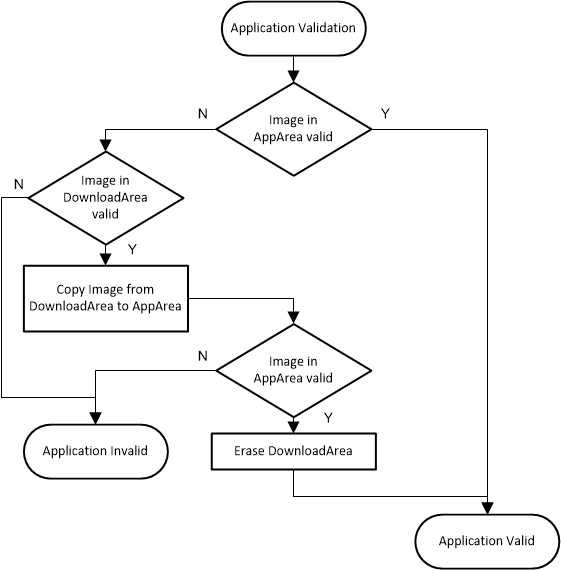SLAA600E June 2013 – January 2024
- 1
- Abstract
- Trademarks
- 1Introduction
- 2Implementation
- 3Customization of MSPBoot
- 4Building MSPBoot
- 5References
- 6Revision History
2.2.4 Dual Image Support
The Application Manager can also support dual image mode. In this mode, a valid application is always expected to reside in main memory even if an image download is interrupted or if a newly downloaded image is corrupt. This mode is critical for OAD where communication can be interrupted unexpectedly.
In dual image mode, the main memory is divided, creating a download area and application area as explained in Section 2.3.1. The application validation process in this mode is different from the usual procedure, as shown in Figure 2-6.
 Figure 2-6 Dual Image Application Validation
Figure 2-6 Dual Image Application Validation